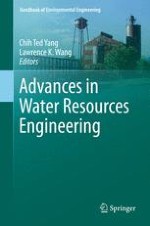
2015 | OriginalPaper | Buchkapitel
1. Watershed Sediment Dynamics and Modeling: A Watershed Modeling System for Yellow River
verfasst von : Guangqian Wang, PhD, Xudong Fu, PhD, Haiyun Shi, PhD, Tiejian Li, PhD
Erschienen in: Advances in Water Resources Engineering
Aktivieren Sie unsere intelligente Suche, um passende Fachinhalte oder Patente zu finden.
Wählen Sie Textabschnitte aus um mit Künstlicher Intelligenz passenden Patente zu finden. powered by
Markieren Sie Textabschnitte, um KI-gestützt weitere passende Inhalte zu finden. powered by